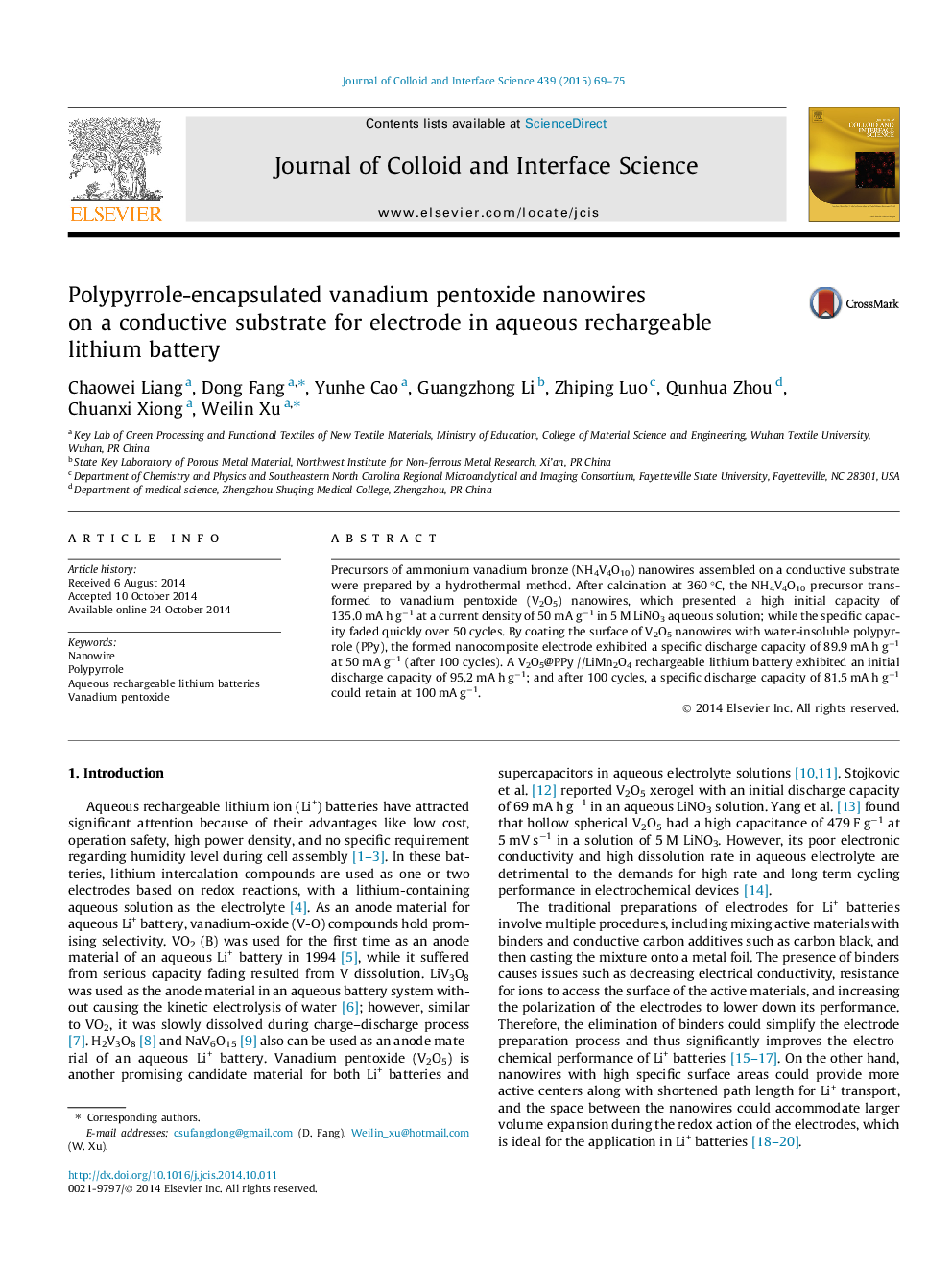| Article ID | Journal | Published Year | Pages | File Type |
|---|---|---|---|---|
| 606879 | Journal of Colloid and Interface Science | 2015 | 7 Pages |
•V2O5 nanowires on conductive substrate are obtained by annealing the NH4V4O10 nanowires.•V2O5 nanowires are coated with polypyrrole (PPy) to form PPy@V2O5 nanocomposites.•The PPy@V2O5 nanocomposites exhibit a high stable discharge capacity.•A flexible PPy@V2O5//LiMn2O4 aqueous lithium battery is assembled and tested.
Precursors of ammonium vanadium bronze (NH4V4O10) nanowires assembled on a conductive substrate were prepared by a hydrothermal method. After calcination at 360 °C, the NH4V4O10 precursor transformed to vanadium pentoxide (V2O5) nanowires, which presented a high initial capacity of 135.0 mA h g−1 at a current density of 50 mA g−1 in 5 M LiNO3 aqueous solution; while the specific capacity faded quickly over 50 cycles. By coating the surface of V2O5 nanowires with water-insoluble polypyrrole (PPy), the formed nanocomposite electrode exhibited a specific discharge capacity of 89.9 mA h g−1 at 50 mA g−1 (after 100 cycles). A V2O5@PPy //LiMn2O4 rechargeable lithium battery exhibited an initial discharge capacity of 95.2 mA h g−1; and after 100 cycles, a specific discharge capacity of 81.5 mA h g−1 could retain at 100 mA g−1.
Graphical abstractFigure optionsDownload full-size imageDownload high-quality image (145 K)Download as PowerPoint slide
